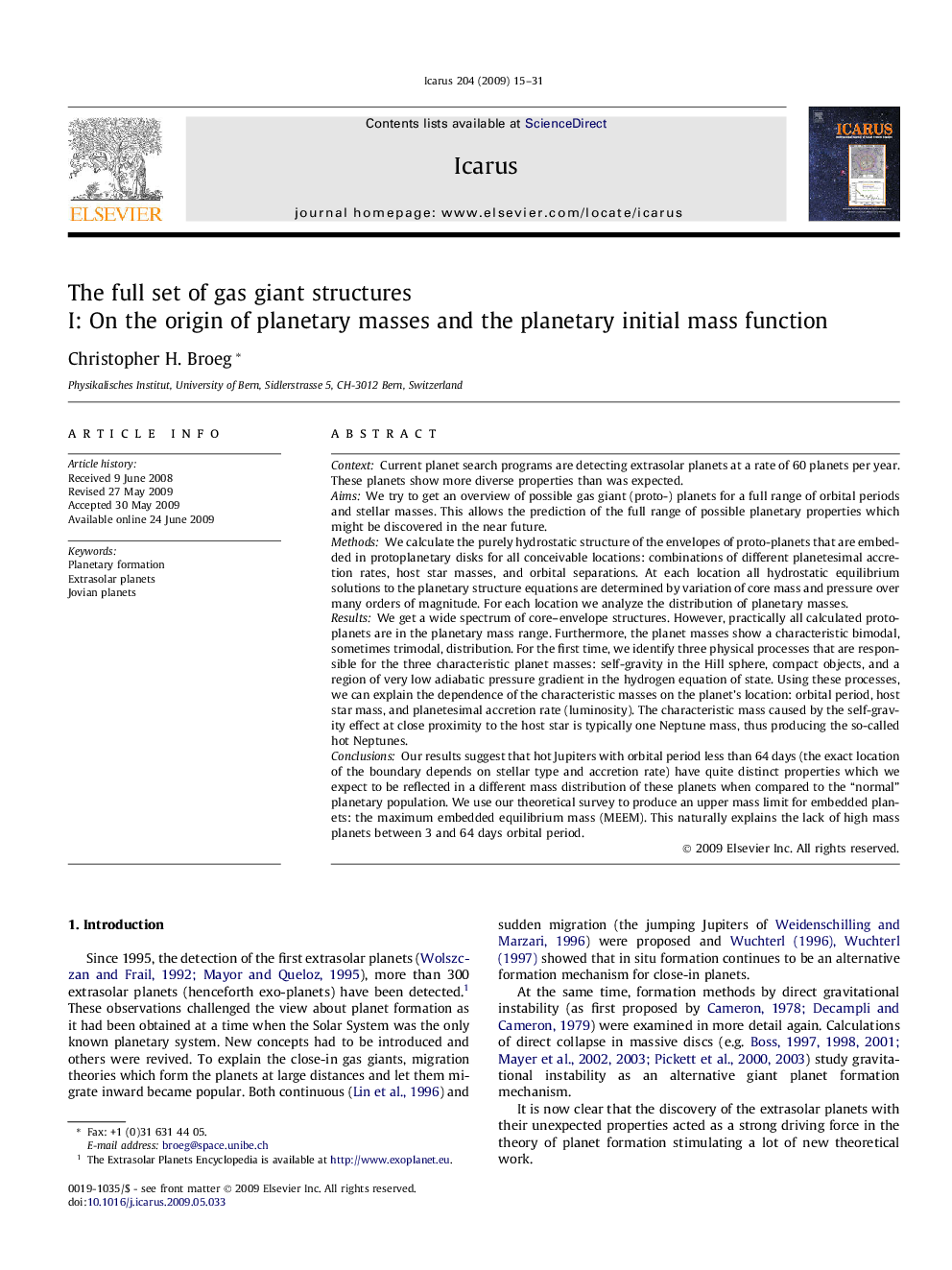| کد مقاله | کد نشریه | سال انتشار | مقاله انگلیسی | نسخه تمام متن |
|---|---|---|---|---|
| 1774437 | 1021165 | 2009 | 17 صفحه PDF | دانلود رایگان |

ContextCurrent planet search programs are detecting extrasolar planets at a rate of 60 planets per year. These planets show more diverse properties than was expected.AimsWe try to get an overview of possible gas giant (proto-) planets for a full range of orbital periods and stellar masses. This allows the prediction of the full range of possible planetary properties which might be discovered in the near future.MethodsWe calculate the purely hydrostatic structure of the envelopes of proto-planets that are embedded in protoplanetary disks for all conceivable locations: combinations of different planetesimal accretion rates, host star masses, and orbital separations. At each location all hydrostatic equilibrium solutions to the planetary structure equations are determined by variation of core mass and pressure over many orders of magnitude. For each location we analyze the distribution of planetary masses.ResultsWe get a wide spectrum of core–envelope structures. However, practically all calculated proto-planets are in the planetary mass range. Furthermore, the planet masses show a characteristic bimodal, sometimes trimodal, distribution. For the first time, we identify three physical processes that are responsible for the three characteristic planet masses: self-gravity in the Hill sphere, compact objects, and a region of very low adiabatic pressure gradient in the hydrogen equation of state. Using these processes, we can explain the dependence of the characteristic masses on the planet’s location: orbital period, host star mass, and planetesimal accretion rate (luminosity). The characteristic mass caused by the self-gravity effect at close proximity to the host star is typically one Neptune mass, thus producing the so-called hot Neptunes.ConclusionsOur results suggest that hot Jupiters with orbital period less than 64 days (the exact location of the boundary depends on stellar type and accretion rate) have quite distinct properties which we expect to be reflected in a different mass distribution of these planets when compared to the “normal” planetary population. We use our theoretical survey to produce an upper mass limit for embedded planets: the maximum embedded equilibrium mass (MEEM). This naturally explains the lack of high mass planets between 3 and 64 days orbital period.
Journal: Icarus - Volume 204, Issue 1, November 2009, Pages 15–31